Not all wireless headphones are suitable for running and exercise, of course. There are wireless headphone models that are clearly suitable for everyday use, with great design and fantastic sound quality. Yet, when it comes down to sports, they are not comfortable if the activity requires a lot of movement. The result is obvious: they will end up falling out, they will continually fall out and we will be more concerned with them than with the training itself. That’s why Treblab truly wireless headphones is the choice that you’re looking for when it’s about a Bluetooth device while running and working out. But if you’re looking for wireless earphones instead of headphones, you can jump in to this article.
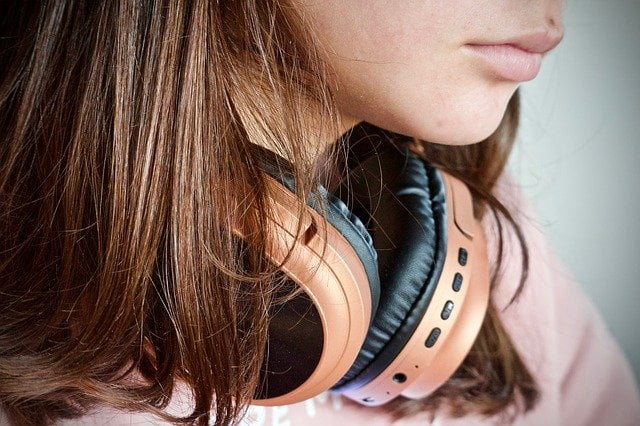
Therefore, the first fundamental point we should look at is their design and construction. Headphones specifically created for sports have a better fit, they usually have different placement and insertion mechanisms. Some surround the ear, others have a design joined by the neck, others are headbands, other manufacturers bet on in-ear headphones with internal stabilizers to prevent them from moving and falling… In short, each manufacturer looks for the solution they think is the most suitable. What is the ideal one? There is no perfect and universal design for everyone, every sportsman will have their own preferences.
The resistance is another key point. You have to think that a headset for sports will have a continuous jog with running, cycling, at the gym, will fall quite often, will receive blows, get wet and bathe in sweat, maybe one day you catch the rain … So you have to look at Bluetooth headset waterproof or with some kind of IPxx certification (either waterproof or splashproof).
Beyond resisting our sweat, we also need a liquid-resistant sports headset to easily wash it under the tap and leave it as good as new every time we want, knowing that nothing will happen to it.
The third and last point, but not least, is the battery. Wireless headphone sports need to be recharged, of course. As a rule, we’ll see a range of about 5-6 hours, although there are extraordinary models with 8 hours or more. That means we won’t have to charge them for several days. As an extra point: it’s a good idea that their charging port is standard (like the micro USB) in Wireless headphone and we don’t need to charge with another dedicated cable when we travel. Extra point 2: check if they have fast charge, some models have this technology and with the charging of a few minutes we will have an extra 1-2 hours of training.
Bluetooth sports headset: advantages and disadvantages
- The advantages of the Bluetooth sports headset or wireless headphone over wired headphones are clear: as for Bluetooth, we forget about the hassle of cables and it’s ideal for listening to the music we have on the smartphone without being physically connected to it, being able to get away and have freedom of movement (something great if you want them as a headset for the gym).
- On the other hand, among the disadvantages of Bluetooth headsets, there are mainly two: usually, they are more expensive than cable headsets, although this depends on the model, as we will see below (recently some very cheap and high-quality headsets have emerged), and another point against them is that they have a battery and therefore we need to recharge them. They usually ensure several hours of operation, but it is possible that sometimes you forget and get “silent” in the middle of a training. Doesn’t it come amiss from time to time?
The best for less than $30
Mpow Cheetah, the economical choice
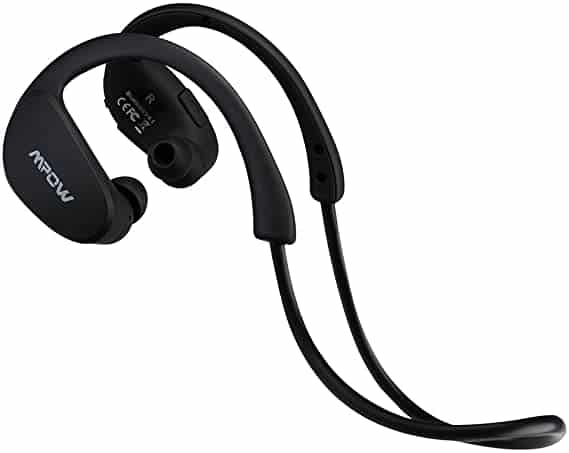
Wireless Headphone:Check price here
We start with options for those who don’t want to spend too much and then we enter Mpow territory. The Mpow brand is not as well known as others. However, it has several models of Bluetooth headsets for sports. The best thing is that what they offer for their tight prices is hard to beat.
On the one hand, there are the Mpow Cheetah, a resounding sales success that can be found for less than $30. They are finished in silicone and are placed behind the ear and the neck, so that area acts as a stabilizer in activities with a lot of movement.
They are connected via Bluetooth 4.1 to the smartphone (Android or iPhone) and theoretically have a battery of 8 hours in continuous playback. Although from experience I can tell you that it is closer to 6 hours. They include playback controls and the micro USB port is protected, like the rest of the headset, by sweat and splash-proof coating. Sincerely, for $25.
In addition to the Cheetah above, the Mpow Swift is the company’s other best-selling headset (and it shares the design with dozens of other headsets, so you’ll probably see it under a different name).
Here the type of headset varies, and there is no support behind the neck. But they are held in place by the in-ear headset and the silicone ear pads that hold it to the inner wall of the ear. The battery life in these is less, about 5 hours. For that price, you can’t order more (available in 3 colors).
SoundPeats Q12, with magnetic coupling

Wireless Headphone:Check price here.
As a third alternative to inexpensive earphones, the SoundPeats Q12 also take advantage of the stabilizers to be attached to the ear (various sizes included). The difference here, however, is that they are magnetic, i.e. when you zoom in on each part they stick with the picture and remain off.
They have the controls on the cable itself, a battery of about 5-6 hours and a comfortable case to carry them protected. Note that in this case, we do not have protection against real water. I have used them running and at the gym without problems, but we don’t all sweat the same.
Plantronics BackBeat Fit
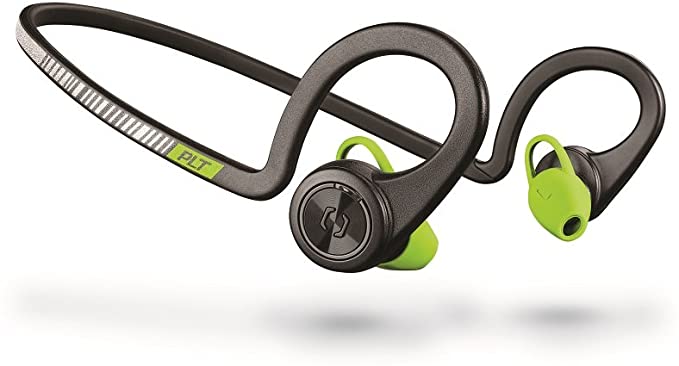
Wireless Headphone:Check price here.
Increasing the budget we find the Plantronics BackBeat Fit, a model of wireless headphone for sports that also bets on the design of the neckband. They are less voluminous and lighter (only 24 grams).
Their construction is exceptional, they are totally flexible, resistant to sweat, rain, and dust (IP57 certification). They have a spectacular 8-hour battery (perfectly complying with what the manufacturer says) playing music and two weeks on standby. The BackBeat Fit have an energy-saving mode that turns them off if it detects that the connection with the smartphone, tablet, or that to which it is connected by Bluetooth has been lost. A plus: they have a quick charge, in 15 minutes we’ll have 1 hour of autonomy.
They are undoubtedly my favorite choice for comfort, durability and sound quality. A super balanced model, here you can read my in-depth analysis and opinion about the Plantronics BackBeat FIT. One detail: the model I show here is a new one, the previous ones only differ in external design and you can find them cheaper for about $79.
Jabra Sport Pulse, sports headset with heart rate monitor
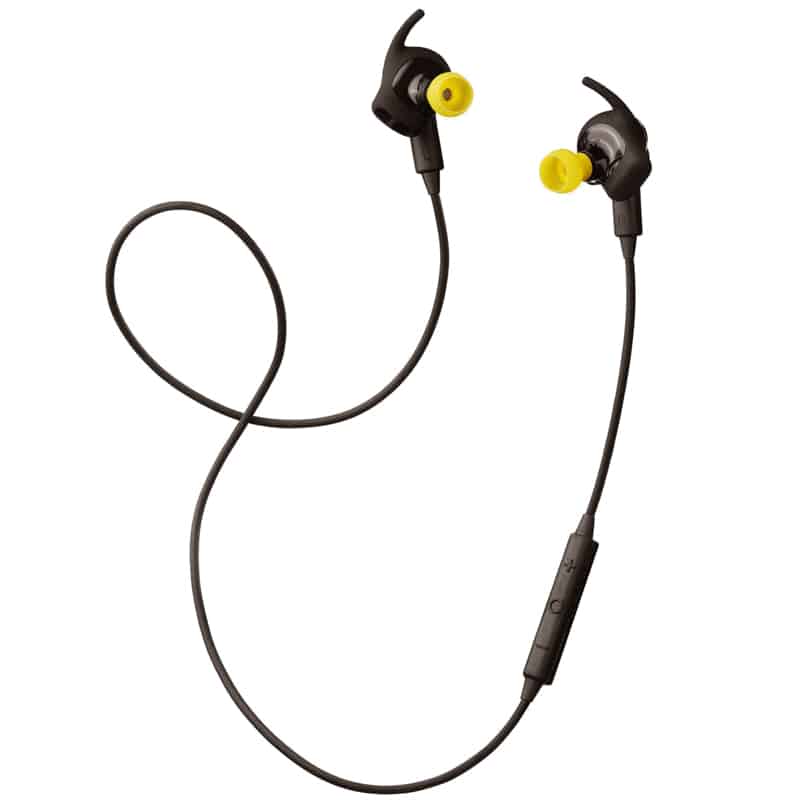
Wireless Headphone:Check price here.
The well-known Jabra brand has several specific models of wireless headphones sports, such as the Sport Coach, Sport Pace, and Sport Wireless+. For this list, I will focus on one of its latest innovations – the Jabra Sport Pulse.
The big difference between these Bluetooth headsets and others is that in addition to listening to all your music without fear of annoying you with bumps or rain (they are IP55 certified), the Jabra Sport Pulse measures your heart rate during training.
That’s right, they include an in-ear heart rate monitor, recording the athlete’s heart rate directly from the inner ear. Other features include up to 5 hours of battery life, a lightweight 16-gram build and the Jabra smartphone app (the app is “Jabra Sport Life”) for planning training and training by zones. But a nice touch is that we can also pair them with popular applications such as Endomondo, Runtastic or Strava.
Denon AH-W150

Wireless Headphone:Check price here.
The Denon AH-W150s join this list of best headsets. Despite being veterans, they still hold up very well to the type in the Bluetooth category combining construction and sound quality.
At first glance, they look more ‘flashy’ but in reality, they weigh only 23 grams and are placed around the ear and inside the ear (in-ear). They include sweat resistance, so you don’t have to worry about that part. On the headset itself, we have the play buttons to control the music without touching the mobile, as well as a built-in microphone to answer calls. Their battery lasts 7 hours per charge and they are available in several eye-catching colors.
High-end sports headphones: if money doesn’t matter
If the budget is really not a problem and all you want is a very high-end headset, with a great sound experience and an all-terrain construction, the following models come with higher price tags, but at the same time, you will have a headset to do sport for many years.
TREBLAB E3
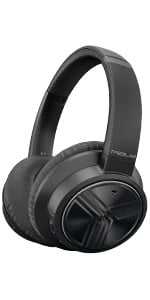
wireless headphone:Check price now.
These babies can crash any giant well-known wireless headphones sports. The brand wants to produce affordable headsets and meantime keep A-class quality of the pack. Well, they did a great job here. The headphones deliver high-fidelity sound protected with Patented Multi-Function Noise Cancellation. In simple words, there are two types of noise cancellation. Pick the one that works the best for you!
As for the battery life, I have to admit – it is unkillable. So, 50 hours on a single charge and 10 hours after a 5-minute charge surely impress anyone. They definitely pack a punch here amongst competitors. Ultra-soft earpads, premium materials, the latest Bluetooth 5.0, voice assistants activation, such as Siri, Google Assistant, Bixby, Alexa – that’s what makes them a great bargain and no-brainer for any athlete. If under $100 price tag doesn’t scare you, then these babies are 100% an ideal purchase.
Jaybird X3
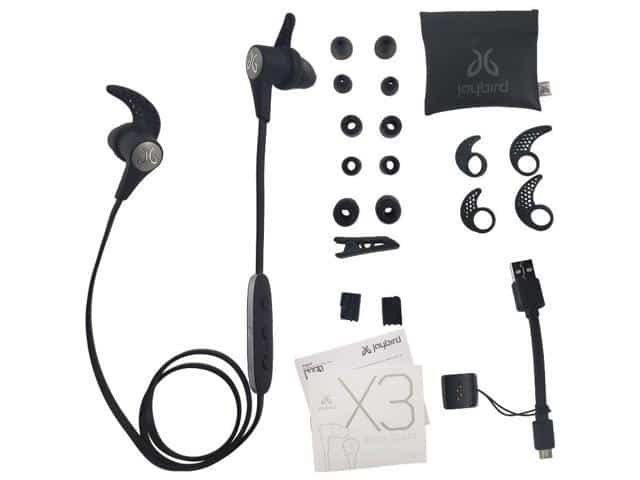
Wireless Headphone:Check price now.
We are serious about introducing the Jaybird X3, which is the evolution of the award-winning Jaybird X2 (these are already hard to find, they are out of print).
The Jaybird X3 headset can be considered as one of the best sports headset on the market. They are in-ear type but, as you can see in the picture above, they include a lot of adapters and earpads to fit in almost any sportsman’s ear. Actually these headphones are perfectly valid for the day to day as well (especially in their darker colors, as they are more discreet).
One of the biggest changes of the X3 is that now they are 34% more compact and ultra-light (17.9 grams) but they keep the 8 hours of battery life per charge, a very good autonomy. In addition, they have fast charge, with 20 minutes in the charger we will have 1 hour of use. They connect via Bluetooth 4.1 with multi-device support (we can pair up to 8).
They are completely sealed against sweat and humidity, no matter how intense the exercise is. The sound quality is very high, and users can create different audio profiles from the app on the smartphone. The only remaining feature is that they use their own charging connector (not micro USB). They are available in several colours.

